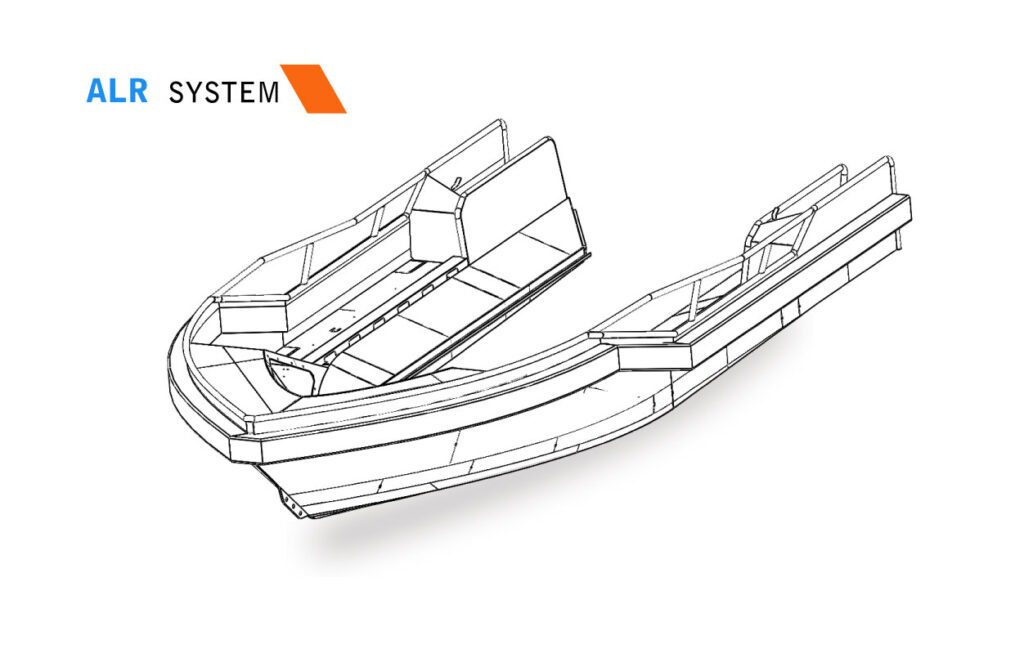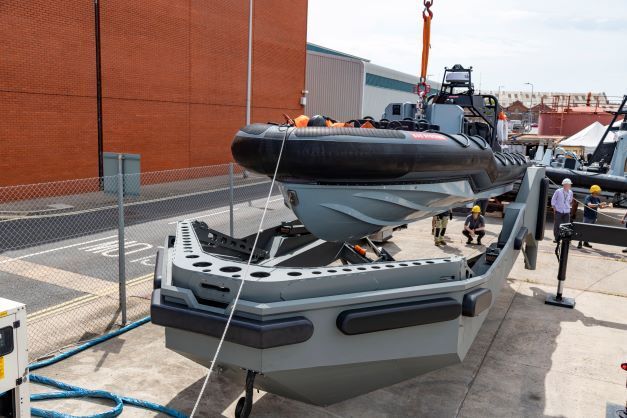Search and rescue at sea is a valiant endeavor to save people and vessels from dangerous situations, but the rapidly growing number of autonomous vessels at sea and the missions they handle require a safer solution for recovery.
Identifying this peril, Haifa-based startup Sealartec came up with a safer way to rescue manned and unmanned vessels – and is in operation globally.
The Sealartec solution is an autonomous system that acts as a cradle for unmanned vessels, bringing them back to the mother ship safely without risking crew lives.
The name Sealartec is a portmanteau of sea, LARS (launch and recovery system) and tech – the principles upon which the company was founded.
Its Autonomous Launch and Recovery (ALR) System is lowered into the water from a mother ship, then gets closer to a vessel in order to bring it back with it.
The process is done by an advanced robotic system comprised of mechanical and electrical components, all commanded by a control system.
The ALR includes a set of ropes and a winch (a mechanical device that is used to adjust the tension of a rope) which attaches to a dedicated hook located on the recovered vessel. This process is known as the “capture.”
While many boats do not yet have such a hook, fleets and owners are now adding it for this purpose, co-founder and CEO Amitai Peleg tells NoCamels.
The system uses a set of sensors, including video processing, to identify the recovered vessel’s location and to initiate capture.
“This is a smart system that can capture any boat, whether it’s manned or unmanned, with sensors and algorithms,” Peleg says.
The company says the systems are better and safer for the launch and recovery of manned vessels, such as fast rescue boats commonly used from large mother ships.
Once the hook is connected to the pulley, the boat in distress is pulled into the cradle, stabilizing it even with waves registering 4 on the Sea State Scale that can reach heights of up to 2.5 meters.
“The capture of the boat is the most critical part of the process,” says Peleg, explaining that this is when vessels and their passengers and crew are most vulnerable.
The boat being rescued must place its engine into neutral in order to allow the automatic system to take full control of the process.
“It’s not pushing anymore; it becomes passive,” Peleg explains. This is a noted difference from other methods, which rely on the vessel pushing forward and maneuverability.
Sign up for our free weekly newsletter
SubscribeAccording to Peleg, the simplicity of the ALR system is the key to its success, along with the shape of the cradle, which he says is a crucial factor.
Because the cradle mimics the contours of a boat, he says, it can stabilize a vessel and prevent further incidents during rescue.

The design also means that different kinds of vessels can safely sit inside the ALR, which is also compatible with any type of crane that is ultimately responsible for lifting the stranded boat off the cradle.
Peleg, an engineer, first came up with the concept in 2015, when he was working for a boat manufacturer.
To make sure his idea was viable, he produced a 3D-printed replica that he placed in a towing tank, which simulates waves, ensuring that his system was capable of easily catching boats.
His employer was reluctant to take the plunge with Peleg’s idea, and so he struck out alone, creating Sealartec and raising funds from an incubator program to start building a real working system.
In 2019, the company made its first actual rescue at sea, of an unmanned boat off the coast of Israel. It used footage of the event to secure its first client in the UK – global defense manufacturing giant BAE, which specializes in maritime technology.

Five years on, Peleg says that Sealartec has “good momentum,” and is now no longer reliant on funding from the incubator.
The Sealartec team is constantly working on new systems, but Peleg declines to detail what is in the pipeline and what is headed for a patent.
The ALR system is in use today by several companies in the UK and Israel, and Peleg says an initial market is launched in the US.
“The maritime industry is very conservative and everything moves slowly,” Peleg says, but it is finally waking up and looking for that “missing link” to improve search and rescue at sea.
“We found a way to think out of the box on how to create a connection between systems at sea,” he says.
“Today, I think we have the leading solution for long-term recovery in the world.”
Related posts

Editors’ & Readers’ Choice: 10 Favorite NoCamels Articles

Forward Facing: What Does The Future Hold For Israeli High-Tech?

Impact Innovation: Israeli Startups That Could Shape Our Future




Facebook comments